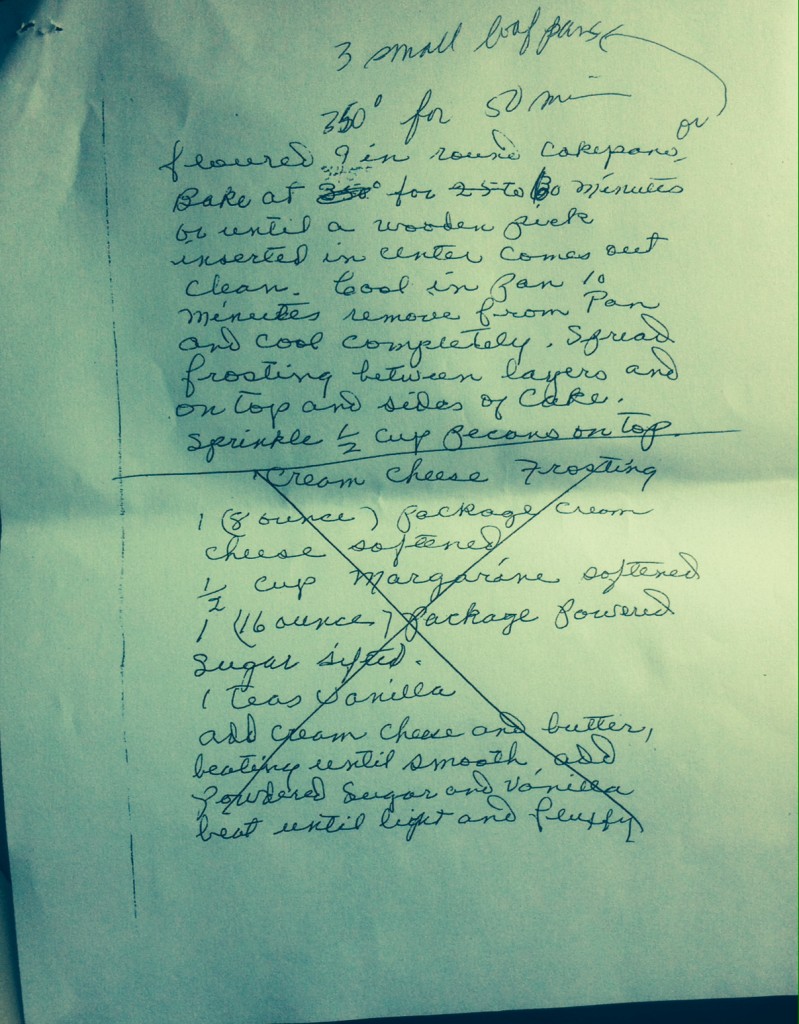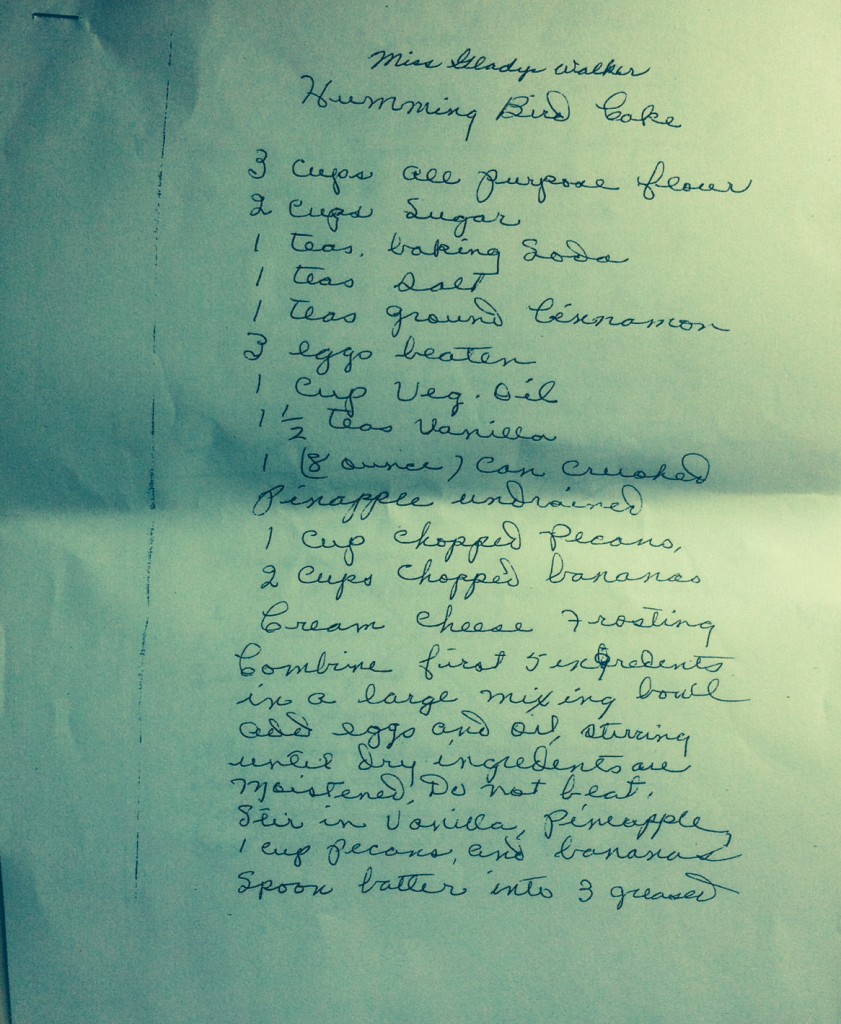To Bake a Hummingbird Cake: Female Food Blogging and Whiteness
My most secret and guilty pleasure is one I will now confess: I love reading food blogs. It is embarrassing but true. I secretly troll the Internet to read food blogs. After years of browsing, I am now something of a connoisseur. Name one and I’ve probably read at least a post from it, if not archived a recipe. It used to be celebrity magazines, but without a functioning television, I have a hard time caring about which Real Housewife has been indicted for tax evasion or which celebrity marriage is crumbling. It’s all trainwrecks and I find that sad. But a Winning Hearts and Minds Cake? Meatballs for New Mothers? With titles like these, what’s not to like?
I have found that some blogs work for me more than others. Trying to specify why one resonates with me is difficult, but I’ve narrowed it down. Some criteria:
a.) written by women in their early to mid-30s
b.) references their personal lives
c.) has at least one post about a career breakdown or seeking comfort in cake
d.) shows struggle with life (the more the better)
Writer Paula M. Salvio seeks to legitimize female food blogging as a way of studying contemporary domestic culture in her essay “Dishing It Out: Food Blogs and Post-Feminist Domesticity.” She states that “many of these blogs offer a transnational primarily female readership a means to explore tastes and fantasies of home, family, friendships—in short, ‘a lifestyle’—that spans national borders (Salvio, 32).
Interestingly enough, the blogs Salvio researches and discusses match the list of blogs I read most often: Smitten Kitchen, Orangette, and The Wednesday Chef. In these blogs, I have discovered the last, subconscious criteria I seem to have for finding a blog captivating:
E.) WHITE
So how can these blogs really create a lifestyle that spans national borders when most of these women are white? “White” meaning privileged, with at least a college education, well-traveled, and access to a Whole Foods Market (for more obscure ingredients: za’atar! star anise!).
As a reader who is well-educated but not white, I have trouble finding spaces to truly represent diverse ways of living in terms of femininity and domesticity. Instead, I find they seem to create a rather constricting “traditional” ideal of what home or family mean. These three specific women represent the majority of female food bloggers in that they are in heterosexual marriages, have meaningful white-collar jobs, and are the primary provider for their children. They juggle their multiple roles as mother, wife, and working woman but still have the privilege to wander through farmer’s markets, eat organic food, and go on family vacations.
While these blogs connect with me through women’s struggles to find meaning in their lives and how to balance work with having a child, other (just as meaningful) experiences of life as an American woman are still invisible. I can make the recipes they post but I will never be able to be one of these women because certain American experiences are not represented in this world. As these women reflect fondly upon comfort foods they had as children, like a casserole they update for modern cooks, I am gently reminded of what I don’t have (Broccoli, Wild Rice, and Cheddar Casserole).
Don’t get me wrong. I don’t want to come off as though I am snubbing these women. Nor am I judging them. I have been an avid reader for years and often find that the struggles they have written about resonate with me. I draw inspiration from their lives and, wish to have many of the things they do. I wish I had an Italian villa where my family gathers to vacation every year and where I will eventually marry, but having come exclusively from some pretty hearty Chinese stock, I highly doubt there is one (Reader, I Married Him). My story, or at least any story similar to mine, remains untold in this world of casseroles and falling in love by way of cake. So I offer you this: my family story in the style of these women I hold so dear. It is an abbreviated version, a version of non-whiteness, recipe included!
The recipe comes from my maternal grandmother, Lilly. Lilly and her sisters, Mamie (a hotel baron) and Anna (the beautiful wife of a Hong Kong business mogul), were born in New York after her father came over via Ellis Island. I distinctly remember visiting Ellis Island with my relatives in the summer of 2007. My mother’s cousin went looking for a name or photo that documented our ancestor’s entrance to the United States. We entered Lilly’s maiden name into the computer database that was supposed to pull family history up. Nothing. After looking at the multitude of Irish and Italian immigrant ephemera, I recall overhearing my mother’s cousin bitterly mutter: “we aren’t here.” While we may not be seen on Ellis Island, there is the Chu family lore we tell each other, over and over. Lilly’s father-in-law, my great-grandfather, in a desperate move, came to the United States smuggled in a shipping container. He started his own laundromat (with a gambling ring in back) then sent for his son and my grandfather, Larry, to come to New York. It was in New York that he eventually met my grandmother. Larry and Lilly married and moved to Texas where they built a successful chain of restaurants in the Houston area, so I suppose food is in our blood. Like many Houstonians, they were strict Southern Baptists.
Regardless of opinion on the lifestyle and beliefs of evangelical Southern Baptists, I believe we can all agree about one great thing to come out of church culture: the potluck. While my mother often complains about the strict Christian upbringing that did not allow her to dance or play cards, she will always fondly reflect on the delicious sweets my grandmother made for church events. One in particular stands out: Miss Gladys Walker Hummingbird Cake.
A traditional Southern dessert, Southern Living Magazine’s Hummingbird Cake is the publication’s most requested recipe. Its origins remain relatively unknown. Some say the cake received the name due to its sweetness, while others say the cake comes from Jamaica and is named after one of the country’s beloved birds. Either way, this cake features prominently in my memories of childhood baked goods. My grandmother received this recipe from one of her church lady friends (Miss Gladys Walker, I assume) and gave a copy to my mother, who was quite health-conscious at the time. Perhaps she thought this cake was slightly more virtuous than the other treats she typically made since it includes mashed bananas and crushed pineapple.
My mother would make Miss Gladys Walker Hummingbird Cake for my teachers around Christmas time. I would go to bed and my mother would stay up, baking these treats in mini-loaf pans. The next morning, the house would smell fragrant, toasty from the warm spices, and she would make me write little handwritten notes and pop them into gift bags to take to school. When I got a little older, I would mash the bananas and open the cans of pineapple. Simple to make, with ingredients that are economical and easy to find, they are the perfect gift and afternoon sweet treat. With its murky unknown history and Southern roots, it is perhaps the best recipe to represent me.
I have attached the following image of Lilly’s Miss Gladys Walker Hummingbird Cake recipe. It comes as a print-out of a Xeroxed version handwritten by my Southern Baptist Chinese grandmother, with edits from my Texan mother, scanned in for you, by me. Hummingbird Cake is traditionally served with cream cheese frosting which my mother finds too unhealthy and I absolutely love. I have attached the cream cheese frosting recipe that comes with Miss Gladys Walker’s Hummingbird Cake recipe. My mother crossed it out but you can still see the directions. Do what you will.





Dilettante Mail
Get updates from us a few times a year.